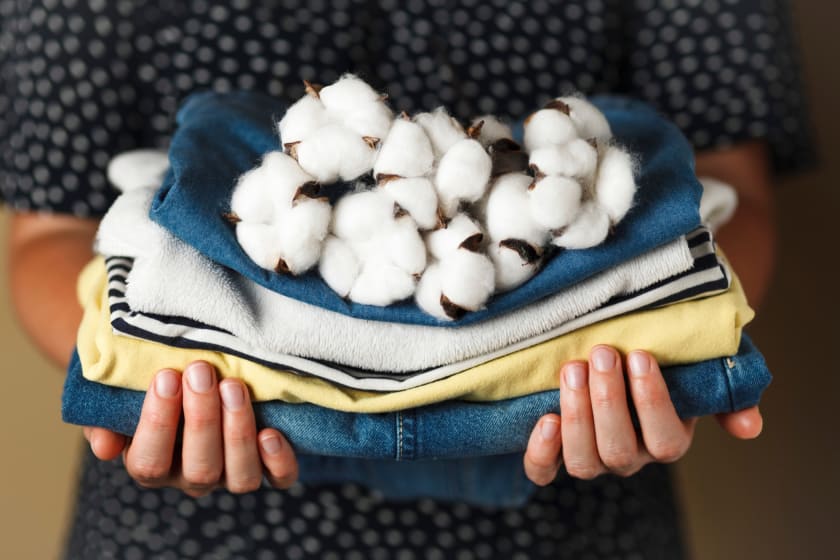Production Challenges for an Eco-fashion Brand



Today, ethical and eco-friendly products are becoming en vogue across the globe. Due to the increasing awareness of the effects of global warming, the fashion industry is trying to focus on eco-friendly, sustainable products.
These days, fashion brands are harnessing resources ethically and responsibly to avoid destroying any ecological balance. For this purpose, they are coming up with new lines of garments and products by producing affordable sustainable clothing.
Some eco-fashion brands adopt sustainability to reduce the carbon footprint of their products, while others focus on the quality and longevity of their garments. While doing so, the fashion brands face various issues from production to designing and more.
Here are some significant challenges in the production faced by fashion brands while they work towards making the industry more sustainable and eco-friendlier:
1. Cost of Sourcing Raw Materials
The production flow of any industry largely depends on raw material supplies. The increasing cost of obtaining raw materials is becoming a major concern for most fashion brands. Some major types of raw materials used for clothing are:
- Cotton
- Synthetic fibers and fabrics
- Silk
- Cellulosic fibers/viscose
- Bast fibers
- Leather
- Experimental fabrics
The cost of all these materials has gone up in recent years, which is hitting the entire clothing industry equally. Moreover, the costs of treating the raw materials and transforming them into new fabrics and design lines have also increased.
2. Environmental Challenges

When it comes to causing environmental pollution, the fashion industry ranks high at the second position below the oil industry. Soon, if sustainable practices are not employed, the textile industry will be responsible for extensive carbon emissions because of the inability to recycle and scarcity of resources.
In this scenario, a step to manufacturing eco-friendly clothing is definitely a welcome move. However, most eco-friendly brands find it challenging to deal with several environmental issues such as –
- Waste accumulation
- Waste management
- Water pollution
- Water consumption
- Usage of chemicals
- Effect on ocean ecosystems
- Greenhouse gas emission
- Soil degradation
3. Lack of Technological Advantage
One fundamental of eco-fashion or sustainable fashion is recirculating or recycling clothing. The concept refers to the products being designed, sourced, and produced with the intention to be used and effectively circulated in the industry in their most usable form. When no longer in use, they are left to the environment to decompose naturally.
Unfortunately, a major percentage of garments is not recycled. The lack of technological solutions is the primary reason for this; garment manufacturers are unable to utilize recyclable products and struggle to meet the demand of producing more garments.
Some of the barriers in clothing recycling include:
- Inefficient waste collection
- Incompetent system of sorting clothes
- Lack of recycling innovation
- Funding gap in recycling products
To gear up the production, an eco-fashion brand needs to overcome these challenges by catalyzing commercial scaling of recycling technologies.
4. Labor Issues
In the fashion industry, it’s common to employ labor at a low wage, and most of the time, wage-per-piece of cloth. Laborers are usually paid below the minimum living wages. Sometimes, they are compelled to work long hours to earn a subsistence income for their daily needs. It often leads to manufacturing substandard products.
Better working conditions and higher pay can show some ray of hope for the workers as well as fashion brand manufacturers to overcome the problem.
5. Difficulty in Finding Resources

When a fashion brand is called sustainable and eco-friendly, it means they use recycled products, focusing on repair, upcycling, and redesigning used products. The process requires more open access to factories and, most importantly, to resources. Many times, fashion brands and manufacturers find it challenging to source raw materials and continue this ‘sustainability model.’
Some significant difficulties in finding resources are:
- Lack of education around sustainability
- Absence of a broader and bigger audience
- Issues in finding an eco-friendly and ethical alternative to the standard manufacturing process
- Demand for more competitive jobs in the eco-fashion industry
Once the fashion brands find solutions to these issues, they will be able to manage the whole process in stronger ways.
6. Increased Transportation Cost
Another big concern for all garment manufacturers is the increased costs of transportation. Fashion houses need to maintain their logistics within a specific range. Now, when it comes to eco-fashion brands, they need to collect their raw materials from various sources. After that, their finished products are transported to the consumer markets through multiple channels. The stronger the logistics system, the more streamlined the distribution.
Unfortunately, most fashion houses find it challenging to keep their logistics in check due to the rising cost of petrol and diesel. Moreover, eco-fashion brands find it challenging to collect resources due to a lack of proper transportation channels.
As a result, all eco-fashion brands find it challenging to keep the logistic costs in limit while producing affordable, sustainable clothing at par with the market price.
7. Consumer’s Sentiments
Very soon, millennials and Gen Z will be considered the largest demographic for all kinds of clothing items. So, it’s quite obvious that the fashion industry will take into consideration what millennials and the younger generations like to wear.
While millennials and following generations are inclining toward sustainable and eco-friendly products, a major percentage of them are not ready to bear their increased prices.
Considering the sentiment of the largest demography of buyers, eco-fashion brands should be more focused on producing affordable sustainable clothing that can benefit everyone on the planet.
Conclusion
As eco-fashion brands face these challenges in the field every day, they need to work more closely with different channels to improve sustainable and environmentally-friendly products.
We at Fashinza help fashion brands and independent designers connect with the most brilliant apparel manufacturers, especially those dealing in sustainable apparel. Whatever your requirements, we’ll help you find a manufacturer that fits your requirements perfectly. Besides, our complete ownership of the process from delivery to design will allow you to rest assured. Visit us here now!



















